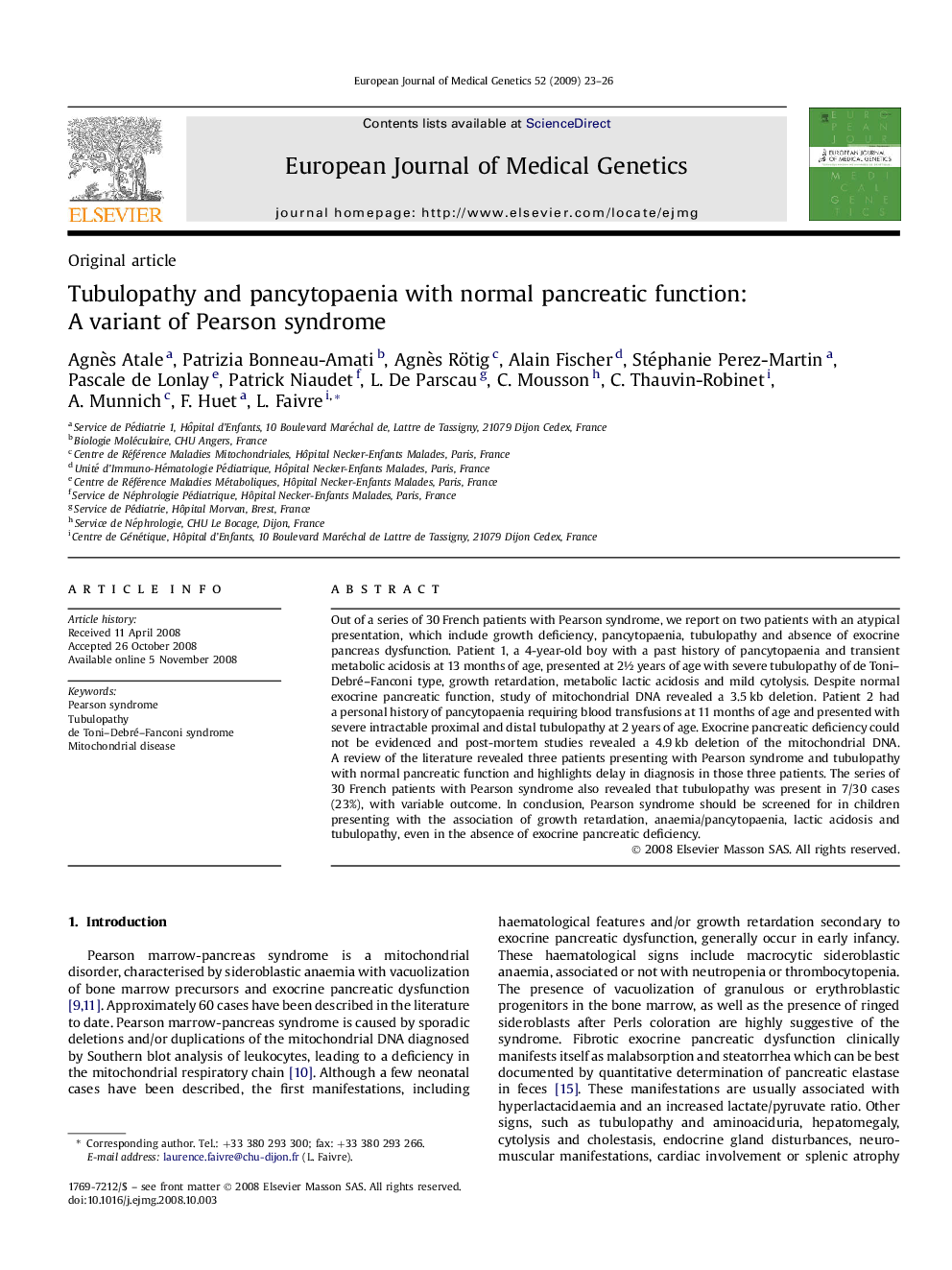| Article ID | Journal | Published Year | Pages | File Type |
|---|---|---|---|---|
| 2814101 | European Journal of Medical Genetics | 2009 | 4 Pages |
Out of a series of 30 French patients with Pearson syndrome, we report on two patients with an atypical presentation, which include growth deficiency, pancytopaenia, tubulopathy and absence of exocrine pancreas dysfunction. Patient 1, a 4-year-old boy with a past history of pancytopaenia and transient metabolic acidosis at 13 months of age, presented at 2½ years of age with severe tubulopathy of de Toni–Debré–Fanconi type, growth retardation, metabolic lactic acidosis and mild cytolysis. Despite normal exocrine pancreatic function, study of mitochondrial DNA revealed a 3.5 kb deletion. Patient 2 had a personal history of pancytopaenia requiring blood transfusions at 11 months of age and presented with severe intractable proximal and distal tubulopathy at 2 years of age. Exocrine pancreatic deficiency could not be evidenced and post-mortem studies revealed a 4.9 kb deletion of the mitochondrial DNA. A review of the literature revealed three patients presenting with Pearson syndrome and tubulopathy with normal pancreatic function and highlights delay in diagnosis in those three patients. The series of 30 French patients with Pearson syndrome also revealed that tubulopathy was present in 7/30 cases (23%), with variable outcome. In conclusion, Pearson syndrome should be screened for in children presenting with the association of growth retardation, anaemia/pancytopaenia, lactic acidosis and tubulopathy, even in the absence of exocrine pancreatic deficiency.
